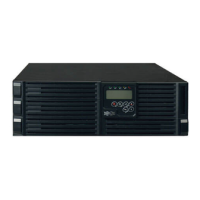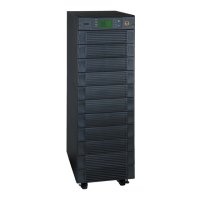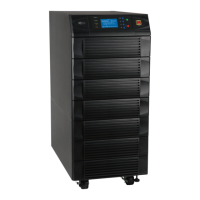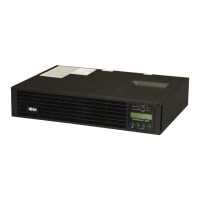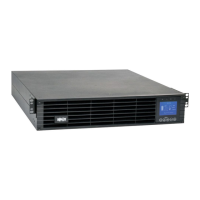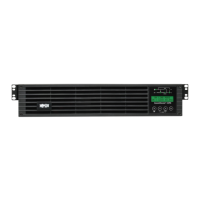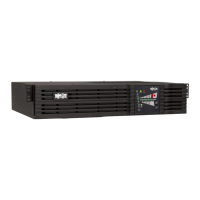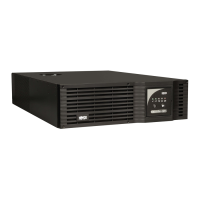1
Owner’s Manual
SU10KRT3/1X
SmartOnline
™
Rack/Tower On-Line UPS System
with Parallel Redundancy Capability
Input: 160-280/277-485V AC, 50/60 Hz, 3Ø, 4-Wire + Ground, Wye
Output: User-Selectable 200/220/230/240V AC, 50/60 Hz, 1Ø, 2-Wire + Ground
Not suitable for mobile applications.
1111 W. 35th Street, Chicago, IL 60609 USA
+1.773.869.1234 • www.tripplite.com
Copyright © 2009 Tripp Lite. SmartOnline is a trademark of Tripp Lite. All other trademarks are the sole property of their respective owners.
1 – Introduction 2
2 – Important Safety Instructions 2
3 – Rear Panel Features 4
4 – Mounting 5
4-1 Unpacking 5
4-2 Placement 6
4-3 Mounting (Rack) 6
4-4 Mounting (Tower) 7
5 – Wiring 8
5-1 Wiring Preparation 8
5-2 Terminal Block Diagram 8
5-3 Electrical and Cable Data 8
5-4 AC Input/Output Wiring Instructions 9
5-5 External Battery Pack Connection 10
6 – Standard Operation 11
6-1 Control Panel Features 11
6-2 Control Panel Error Codes 12
6-3 Normal Mode Startup 13
6-4 Battery Mode Startup (Cold Start) 14
6-5 UPS System Shutdown 14
6-6 UPS System Settings and Measurements 14
7 – Parallel Redundancy Operation 16
8 – Communications 17
8-1 Network Card 17
8-2 EPO Connection 17
8-3 RS-232 Serial Communications 17
9 – Troubleshooting 18
10 – Specifications 19
11 – Storage and Service 19
12 – Battery Replacement 20
13 – Warranty 21
Español 22
Français 43
Русский
64


